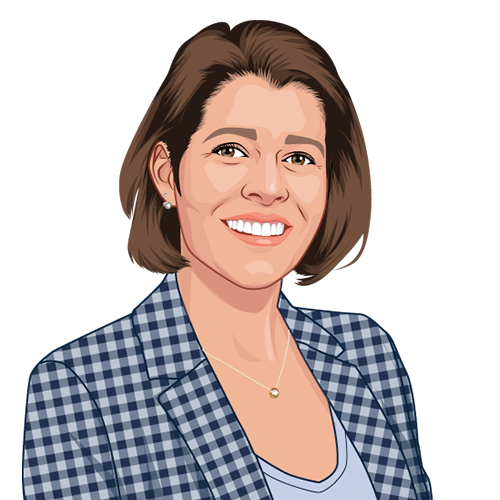
The Importance of Succession Planning
November 19, 2024
The Importance of a Living Financial Plan
December 3, 2024The financial advisory industry has evolved considerably over the past few decades. While stockbrokers used to dominate the field, today’s financial advisors offer a comprehensive suite of services that extend far beyond buying and selling securities.
To keep up with clients’ increasingly complex needs and expectations, modern financial advisors need to embrace new technologies and adapt their business models to stay competitive. Those who do are more likely to build deeper, more meaningful relationships with their clients, garnering their long-term loyalty and referrals.
In this article, we’ll explore the history and evolution of financial advisors’ roles and relationships. After that, we’ll explain how modern financial advisors can leverage technology to grow their businesses and secure their long-term success.
The Mid 90s: How Stockbrokers Set the Stage For Modern Financial Advisers
Before financial advisors entered the scene, stockbrokers were the primary intermediaries between investors and financial markets. Their role was straightforward: sell stocks and earn commissions.
From the 1950s to the 1980s, investors relied on stockbrokers to manage their portfolios. However, their relationships were much more transactional than what investors experience now. Stock brokers’ compensation came from trade commissions, so they spent most of their time monitoring market movements, making trades, and fulfilling client orders.
This commission-based model created a set of incentives that prioritized short-term transactions over long-term financial planning. Thus, investors didn’t receive the same level of personalized service or holistic financial planning services that they do today.
The Late 90s: The Rise of Mutual Funds and Fee-Based Advisors
Mutual funds are pre-built, diversified portfolios that typically include stocks, bonds, and other securities, and are managed by professional fund managers. While the first American mutual fund was created in 1924, mutual funds didn’t gain widespread popularity until the 1980s and 1990s.
During these two decades, mutual funds transformed the financial services industry and gave rise to a new type of financial advisor: the “fee-based” advisor. Instead of earning commissions on transactions, these advisors charged flat fees based on clients’ assets under management (AUM). This shift aligned advisors’ incentives with clients’ long-term goals, focusing on portfolio growth rather than executing trades.
Another benefit of mutual funds is that they free up financial advisors’ time, enabling them to broaden their scope of services beyond stock picking. This marked the beginning of a more holistic approach to financial advising where clients sought comprehensive guidance on topics including:
- Retirement planning – Setting financial goals for clients’ retirement, determining how much they need to save, selecting appropriate investment strategies, and creating withdrawal plans to ensure financial security throughout retirement.
- Tax strategies – Planning and implementing tactics to minimize clients’ tax liabilities, such as tax-efficient investing, utilizing tax-advantaged accounts, and maximizing deductions or credits.
- Estate planning – Organizing and managing a client’s assets to ensure they’re distributed according to their wishes after death, often leveraging wills, trusts, and other strategies to reduce estate taxes and avoid probate.
The Early 2010s: The Expansion of Fiduciary Duty
In 2010, another pivotal shift took place in the financial advisory industry. The Department of Labor (DOL) proposed a rule to amend the Employee Retirement Income Security Act of 1974 (ERISA). This rule significantly expanded the definition of who is considered a “fiduciary” — a person legally obligated to prioritize their clients’ best interests over their own financial incentives.
Although this fiduciary rule was eventually rolled back, it raised awareness of fiduciary responsibility and sparked a shift toward greater transparency, accountability, and trust in the advisory profession.
While many stock brokers continued to work on commission, an increasing number of advisors adopted fee-based models, focusing on the value of their guidance, financial planning, and portfolio management. Not only did this shift strengthen trust and long-term client relationships, but it also led to a rise in advisors offering more comprehensive services, including tailored retirement, tax planning, insurance, and estate planning.
The 2020s: The Modern Financial Advisor – A Holistic, Client-Centric Professional
Fast forward to 2024, and financial advisors are no longer just portfolio managers. They now serve as stewards of their clients’ wealth, helping them achieve long-term financial goals and navigate complex financial situations.
The modern financial advisor is part financial planner, part tax consultant, and part financial coach. Many modern advisors also provide a breadth of services and support an increasingly diverse range of clients, from ultra-high-net-worth individuals to middle-class families and young professionals.
Clients’ expectations have evolved accordingly — they want to feel as if their financial advisor is readily available to meet their needs and walk them through the complexities of tax planning, estate planning, charitable giving, insurance, and retirement. As time goes on, the emphasis on holistic wealth management is only expected to increase.
The Role of Technology on the Modern Financial Advisory Landscape
Technology and strategic outsourcing are two key drivers of financial advisors’ new role. They can streamline many of the administrative tasks that once took up a significant portion of an advisor’s time, including:
- Client onboarding
- Investment research and analysis
- Portfolio rebalancing
- Performance tracking
- Financial forecasting
- Risk management
- Compliance reporting
- Tax optimization
- Back-office tasks
By outsourcing these tasks to technology platforms and specialized service providers, today’s advisors have more time than ever to focus on what they do best: building relationships with their clients, understanding the nuances of their needs, and helping them achieve their long-term financial goals.
How Outsourcing Middle and Back Office Functions Can Drive Success
In order to grow their businesses, modern financial advisors need to free themselves from the burden of managing their day-to-day operations. Turnkey Asset Management Programs (TAMPs) can play a pivotal role in this process. Here’s how:
- TAMPs allow advisors to outsource their investment management – TAMPs enable advisors to provide their clients with institutional-level investment strategies and oversight. This can be difficult for smaller advisors to do on their own. TAMPs also help advisors of all sizes stay on top of market trends and changes in the investment landscape without dedicating hours to research and analysis each week.
- TAMPs leverage the expertise of seasoned investment specialists – TAMPs offer access to a diverse range of investment strategies and solutions, backed by experienced portfolio managers and investment committees. This outsourced model gives advisors the freedom to focus on growing their practices and delivering personalized financial advice.
- TAMPs streamline administrative tasks – TAMPs also allow advisors to delegate middle and back-office tasks – such as trade executions, portfolio rebalancing, performance reporting, compliance management, custodial services, client onboarding, billing, and marketing – to specialized firms, freeing up their time to focus on the client-facing aspects of their business.
- TAMPs can increase advisors’ business growth and value – By outsourcing key functions, advisors can scale their practices more efficiently, expand their service offerings, and enhance their client experience, all while reducing overhead costs and operational complexities.
Learn More: What is a TAMP and Should You Use One?
Why Financial Advisors Should Overcome Their Fears About Outsourcing
Despite the clear advantages of outsourcing, some modern financial advisors are still hesitant to delegate their investment management to a TAMP. This fear often stems from a desire to maintain control over their clients’ portfolios and concerns about outsourcing costs.
Fortunately, both of these concerns are misguided. Here’s why:
- Control – Some TAMPs, like Alden COVE, allow advisors to manage their own investment strategies, leverage institutional asset managers, or fully outsource their investment management, depending on their preferences. This flexibility provides advisors with a sense of control and confidence that they can tailor their investment strategies to align with their clients’ goals.
- Costs – Many advisors worry that their TAMP fees will eat into their profit margins, making it difficult to remain competitive. However, advisors who outsource their investment management and back-office tasks to TAMPs often realize significant revenue gains as they focus more on client acquisition, retention, and referrals. They can also achieve greater operational efficiency, enabling them to scale their businesses without sacrificing quality.
Learn More: How to Choose a Turnkey Asset Management Platform (TAMP)
Personalized Service: The Key to Increased Revenues, Retention, and Referrals
Since TAMPs can provide top-notch asset management, the new frontier for financial advisors is providing personalized service. An advisor’s ability to deliver exceptional service is what will set them apart in an increasingly competitive market. They can do so by:
- Actively listening during consultations and client meetings.
- Tailoring financial plans to each client’s unique goals, risk tolerance, and timeline.
- Proactively updating clients on their portfolios’ performance.
- Checking in regularly to see if their clients are going through any major life changes, such as marriage, retirement, or divorce.
- Expanding their service offerings to satisfy their clients’ holistic financial needs.
- Offering ongoing education so their clients feel empowered about their financial futures.
According to Craig Martin, J.D. Power’s executive managing director and head of wealth and lending intelligence, “Great investment advisors set themselves apart by proactively addressing their clients’ needs, delivering comprehensive guidance, and communicating clearly and frequently about the issues that matter most to their clients.”
Many Financial Advisors Have Yet to Adopt the Right Technology
While personalized service is paramount, the 2023 J.D. Power U.S. Financial Advisor Satisfaction Study found that nearly one-third (28%) of financial advisors don’t have enough time to focus on their clients. These financial advisors:
- Spend an average of 41% more time per month than their peers on non-value-added tasks, from compliance to administration.
- Have a 30-point lower Net Promoter Score® (NPS), a measure of advisor advocacy, than advisors who do have enough time for their clients.
This study also discovered that 20% of financial advisors are planning to retire in the next five years, while roughly 30% say they “probably will” continue working for their current firm over the next one to two years. Advisors who expressed the greatest enthusiasm for staying at their firms cited technology as a key factor influencing their employee retention.
As you can see, advisors who leverage TAMP technology and similar solutions are better equipped to deliver exceptional service and meet client needs, resulting in higher retention and more referrals. Additionally, they’re more likely to keep experienced advisors at their firms for the long term.
Embrace the Future of Financial Advising with Alden Investment Group
As you can see, the financial advisory industry has undergone a remarkable transformation over the past several decades. Today, the primary role of financial advisors is to deliver personalized service, maintain proactive communication, and offer a comprehensive range of solutions that address the full spectrum of clients’ financial needs.
To keep pace with these evolving demands and stay competitive, advisors must embrace advanced technologies and outsourcing solutions. One of the most effective ways to achieve this is by leveraging a TAMP.
Modernize Your Business With Alden COVE
If you’re ready to take your advisory practice to the next level, Alden Investment Group is here to provide the resources, technology, and expert guidance you need to succeed.
Our flexible TAMP solution, Alden COVE, is designed to increase your efficiency, expand your capabilities, and elevate your client experience. With Alden COVE, you can:
- Employ over 500+ institutional strategies, including mutual funds, ETFs, and equities, to provide your clients with diverse, professionally managed investment options.
- Choose from a wide range of flexible investment management options, ranging from fully outsourced solutions to complete in-house control.
- Take advantage of an advanced trade order management system that seamlessly integrates with multiple custodians, streamlining your operations.
- Enjoy robust client account and compliance support, ensuring regulatory requirements are met with ease.
- Provide your clients with private-labeled web portals and mobile apps, powered by Black Diamond technology.
- Use an integrated billing, reporting, and accounting platform that simplifies your financial tracking and reduces administrative burdens.
Above all, Alden COVE gives you access to a team of seasoned investment professionals who are committed to helping you grow your practice. Whether you need help with model creation, business development, or succession planning, our team is here to provide the support you need to succeed.
Ready to learn more about how Alden COVE can transform your practice? Reach out to our team at Alden Investment Group today and take the first step toward a more successful, client-focused future.
Sources:
Analyzing Alpha. A Short History of Stock Brokerage Firms.
https://analyzingalpha.com/stock-brokerage-history
Investopedia. A Brief of History of the Mutual Fund.
https://www.investopedia.com/articles/mutualfund/05/mfhistory.asp
SIFMA. DOL Fiduciary Rule Redux.
https://www.sifma.org/resources/news/blog/dol-fiduciary-rule-redux/
J.D. Power. Time-Starved U.S. Financial Advisors Considering Alternative Options, J.D. Power Finds.
https://www.jdpower.com/business/press-releases/2023-us-financial-advisor-satisfaction-study





